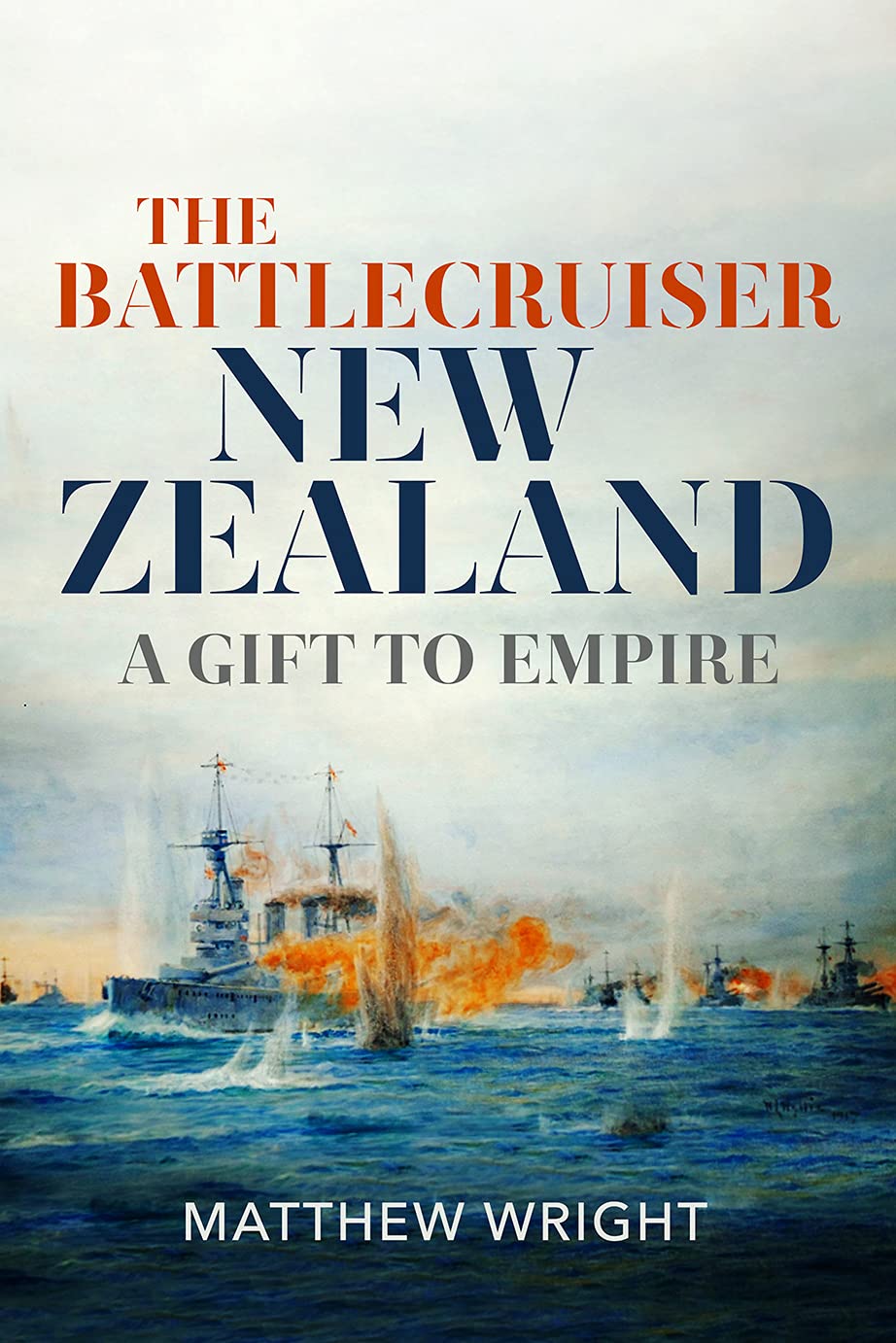The Battlecruiser New Zealand: A Gift to Empire
Matthew Wright
 As the world increasingly realizes that it lives in “interesting times,” including a renewed era of great-power competition, scholarship focusing on the early twentieth century provides vital insight. In The Battlecruiser New Zealand: A Gift to Empire, Matthew Wright provides such insight, focusing on a singular ship that sits at the intersection of some of that period’s most important events, themes, and trends.
As the world increasingly realizes that it lives in “interesting times,” including a renewed era of great-power competition, scholarship focusing on the early twentieth century provides vital insight. In The Battlecruiser New Zealand: A Gift to Empire, Matthew Wright provides such insight, focusing on a singular ship that sits at the intersection of some of that period’s most important events, themes, and trends.
Wright is a prolific writer and historian of New Zealand, whose works span a wide variety of political, geographic, and military topics. His most recent takes a single vessel as its subject, delivering an exciting approach to history through the “experience” of this vessel as it was designed, proposed, funded, constructed, deployed, embroiled in a world war, and finally, scrapped. This approach is not without its challenges; Wright weaves the firsthand recollections and memoirs of human actors, copious technological information, fast-paced operational military events, and material history together to achieve it.
The book begins by setting the stage at the dawn of the twentieth century in New Zealand, a fascinating backdrop for understanding this turbulent moment. Why did this colonial government (and by extension, its taxpayers) wish to fund the construction of what was, in its day, a fantastically powerful and expensive weapon bearing the Dominion’s name? This question occupies Wright through the book’s first half. Thereafter, he pivots to a ship’s-eye view of the cataclysm of the Great War, bringing the reader aboard for the tedium of North Sea sweeps and the excitement of the war’s few (yet dramatic) battles, of which Jutland looms the largest. The book concludes with HMS New Zealand’s final decommissioning and subsequent scrapping; a victim equally of lightning-fast technological obsolescence and the postwar fervor for disarmament, budgetary retrenchment, and arms-limitation.
Wright’s extensive expertise and publication record are on display in the book’s endnotes, and readers who explore them will find hidden gems, such as insights on innovations in range-finding from the author’s own great-uncle H.C. Wright, who served in that capacity during the Great War. Indeed, Wright’s sharp yet accessible descriptions of technological innovations, from battlecruiser design to fire control, are a strength of this book and are helped by numerous image plates and diagrams.
Noteworthy moments of the book are given over to discussions of scholarly debates on the views of leading lights like Jacky Fisher and Winston Churchill, the motives of major characters in the ship’s life like New Zealand Prime Minister Joseph Ward, and especially to the reputation and choices of John Jellicoe, who held the Grand Fleet command during the war and later used New Zealand as his means of conveyance on a postwar tour of the Dominions. While these excursions to the literature are perhaps surprising, it would be unfair to fault Wright for them, as the savagery with which naval historians often treat one another tends to provoke a certain historiographical thoroughness. “History is,” as Wright notes several times, “a conversation.” Conflagration (or, in a nod to cordite magazine mishaps on Dreadnought-era ships, deflagration) sometimes feels like a more apposite metaphor.
Wright does fellow scholars a service on several fronts, especially on his treatment of the financing of the battlecruiser, showing that the ship was neither somehow unaffordable nor unusually long in being paid off by its namesake Dominion. Likewise, Wright’s outstanding analysis of the ship’s Māori associations, particularly its talismanic piupiu (skirt) and other gifts which, in popular legend, guaranteed the ship’s survival of the war’s major engagements, is a highlight. These “symbolized Māori engagement with Pākehā society,” but also how “the unfulfilled promise of that engagement - symbolized by the Treaty of Waitangi - could be highlighted in an age of embedded racism by colonial authorities” (109). Through analysis like this, The Battlecruiser New Zealand has the unusual distinction of being both an enjoyable read and a support to experts.
- Barnsley: Seaforth Publishing, 2021
- Annapolis: Naval Institute Press, 2021
- 6-1/2” x 9-1/2”, hardcover, 272 pages
- Photographs, drawings, appendices, notes, bibliography, index. $42.95
- ISBN: 9781526784032
Reviewed by: Jesse Tumblin, Duquesne University
